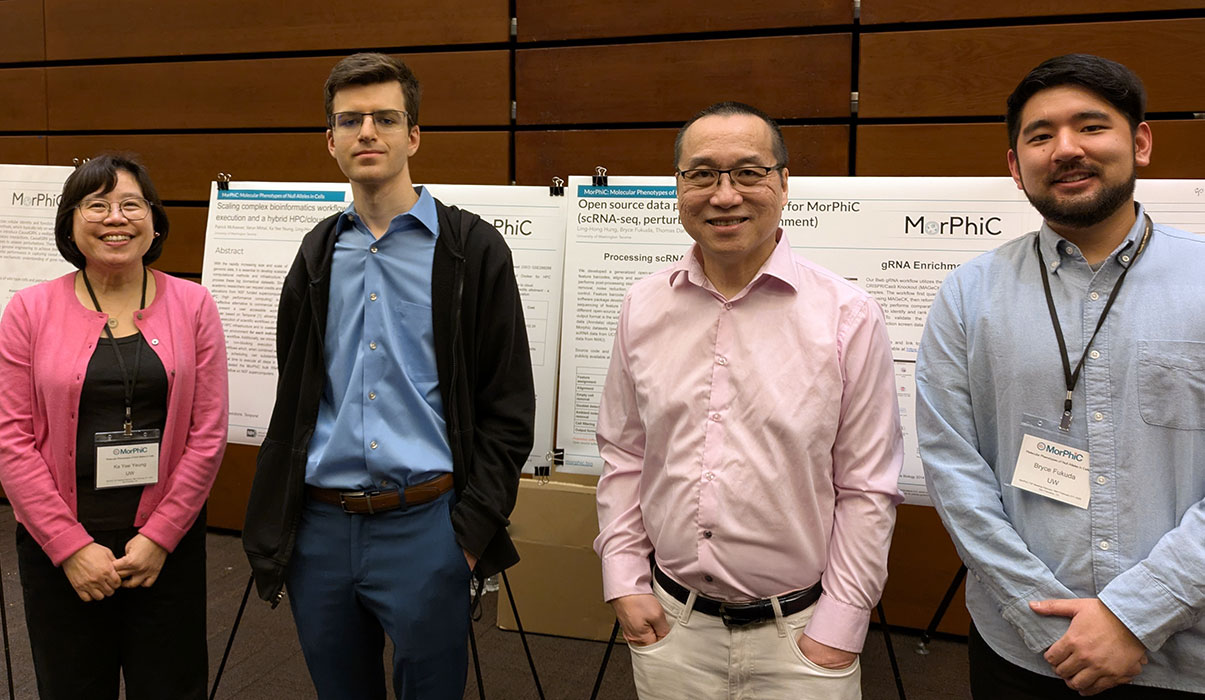
Towards the Functional Characterization of All Human Genes
A great deal of scientific knowledge on DNA has been amassed since Watson and Crick first discovered its structure in 1953. The Human Genome Project, which started in 1990, was another leap forward, providing an open-access reference to the human genetic blueprint.
One of the next frontiers in genetic research is understanding how genes function, alone or together, to govern cellular processes.
The MorPhiC Consortium aims to do just that. It has publicly released its initial set of data and published a new perspective paper in Nature. Dr. Ka Yee Yeung, the Virginia and Prentice Bloedel Professor, and Ling-Hong Hung, Research Assistant Professor, both in the School of Engineering & Technology, are among the authors of the paper along with graduate students Rohan Avireddy, Varun Mittal, Niharika Nasam and professional staff Thomas Dahlstrom, Jesse Flores, Bryce Fukuda. Flores is a graduate of the Certificate of Software Development Engineering program and Fukuda earned his master’s in computer science and systems from UW Tacoma in 2023.
MorPhiC stands for Molecular Phenotypes of Null Alleles in Cells. It is a collaborative research program that aims to functionally characterize all protein-coding human genes. The program focuses on developing a catalog of molecular and cellular phenotypes for null alleles for every protein-coding human gene.
The ultimate goal is to provide a comprehensive understanding of the biological function of each human gene, filling the knowledge gap for the majority of genes that are currently underrepresented in scientific literature. The hope is to understand the function of genes in regulating cellular processes that ultimately affect organismal development and disease.
"Our research group at UW Tacoma is primarily responsible for the development of computational methods and analytical pipelines to uniformly process data generated by the MorPhiC program,” says Yeung.
The first set of data includes 71 gene or protein perturbations — a prelude to the approximately 1,000 genes that will be targeted throughout the first five-year phase of the MorPhiC program.
“This first public release includes sequencing data generated by all four data production centers in the MorPhiC program. Raw and processed data are available from the MorPhiC web portal and public data repositories. This data release is the result of hard work from everyone in the program, ranging from data generation, ingestion, submission, processing, analysis, and dissemination as well as laboratory protocols, experimental design and technical development. Our team at UW Tacoma is very grateful for the opportunity to collaborate with other centers in the program, and contribute towards this community resource.” says Yeung.
Having established experimental protocols and technology framework, the consortium now expects to significantly accelerate the production of additional data types across perturbed genes. The goal is to better understand the biological context dependency of these perturbations by studying them across additional genetic backgrounds.



